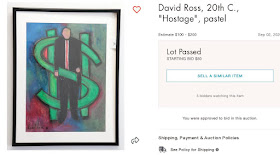 |
| Felix Joubert (1872-1953) [Source] |
Many of my blogposts start as very small questions or observations, which might be easy to ignore, but that become more interesting as I pursue them, often leading in unexpected directions. Today's post is an example of this.
I am attempting to trace the provenance and present whereabouts of as many lots as possible from the Holford sale in 1927. Looking through the Italian volumes of the Illuminated Manuscripts in Cambridge catalogue this week, I found one that I had previously overlooked, now at the Fitzwilliam. Its reported provenance led me to "meet" Felix Joubert for the first time.






